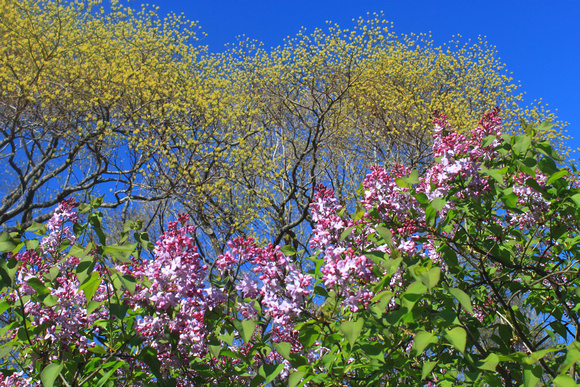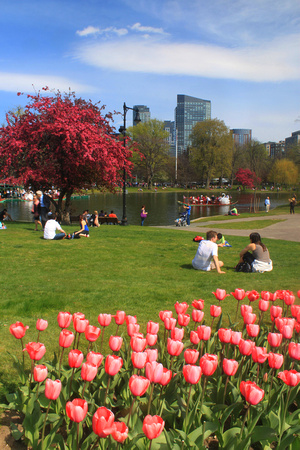Boston in Spring: Arnold Arboretum and Boston Public Garden
Amidst the bustle of metropolitan Boston, visitors in the spring are treated to beautiful floral displays as the city's parks and gardens come into bloom during April and May. Two especially colorful highlights of the 'Emerald Necklace,' a chain of parks that serve as welcome oases from development and traffic, are the Arnold Arboretum and the Public Garden. As recent springs such as the warm 2012 and cool, late 2013 have proven, flowering times can vary by several weeks - it's worth checking for updates before planning a visit.
Located in the Chestnut Hill neighborhood, the Arnold Arboretum is a treat to explore during the spring. Within its 265 acres are more than 15,000 trees, shrubs, and flowers from around the world. The Arboretum is managed by Harvard University, which uses the grounds for research and public education, and the city of Boston, which is responsible for security and infrastructure. Visitors enjoy walking on several miles of paved roads and footpaths that offer easy exploration of the grounds. You can do an short outing with family or just relax on the lawns, or a long circuit hike of several miles. My favorite walk, time permitting, is a 4.1-mile circuit from the visitor center that visits Peters and Bussey Hills.

 Lilacs and early leafout at the Arnold Arboretum.
Lilacs and early leafout at the Arnold Arboretum.
One of the Arboretum's popular spring events is a festival during the peak of the lilac blooms in early May. The lilac gardens, which include roughly 200 varieties, are located along the base of Bussey Hill near the center of the property. The nearby Bradley Rosaceous Collection has many colorful plantings including roses and cherries. Another must-see is Peters Hill at the Arboretum's southern boundary. From the summit of this 240-foot eminence, you'll enjoy sweeping views over apple and cherry trees to the Boston skyline. For easy access, you can park on Bussey Street and enter at the Peters Hill or Poplar gates (be sure to check regulations when parking on any of the streets).

 Visitors enjoy spring at the Public Garden.
Visitors enjoy spring at the Public Garden.
Once a salt marsh, the 24-acre Boston Public Garden was designed and established during the mid-19th century.The gardens are bounded on the south by Boylston Street, on the south by Arlington Street, and on the north by Beacon Street; Charles Street divides Boston Common from the gardens. The plantings include variety of both native and exotic trees, shrubs, and flowers. The latter are maintained throughout the growing season from stock at greenhouses at Franklin Park. A favorite for many visitors are the colorful tulips, which bloom in red, purple, yellow, and other hues in early spring. Visitors may also enjoy a swan boat tour on the pond, and views of ducks, swans, squirrels, songbirds, and other wildlife. In autumn, the trees offer foliage displays into November, long after color has faded from most other regions of New England.
For directions and more visitor information, visit the Arnold Arboretum's website http://www.arboretum.harvard.edu, and the City of Boston Public Garden page http://www.cityofboston.gov/parks/emerald/public_garden.asp
Comments
Jeff
http://www.printradiant.com | http://www.printlinkage.com | http://www.hitsticker.com | http://www.stickermac.com